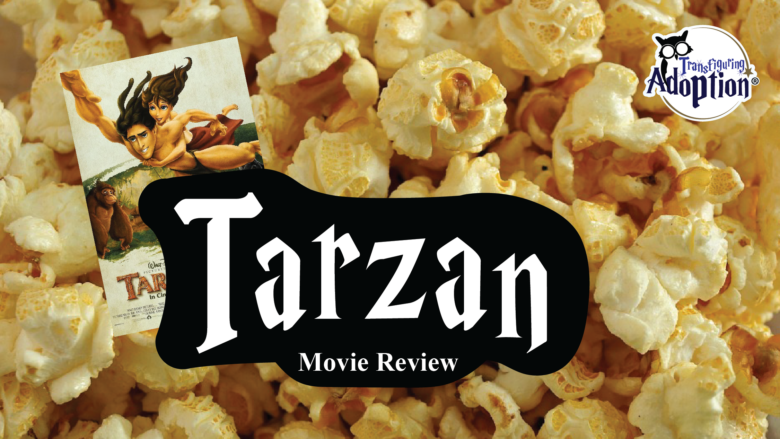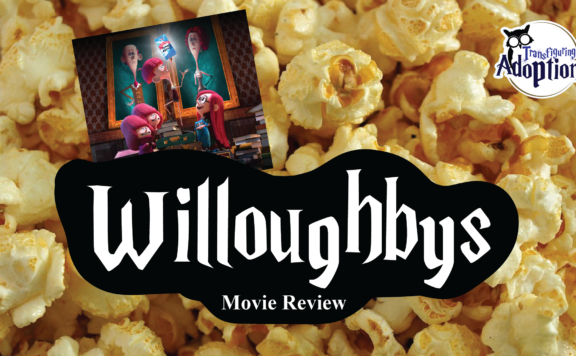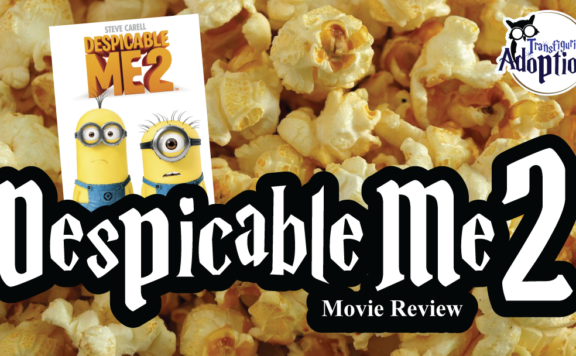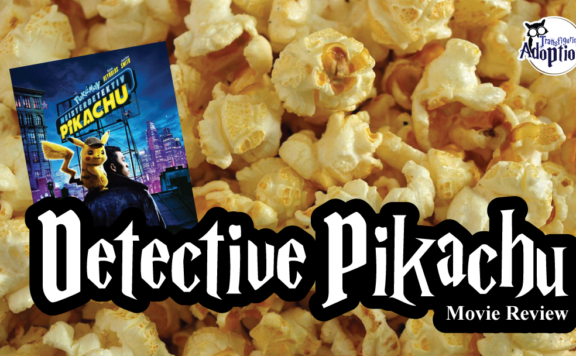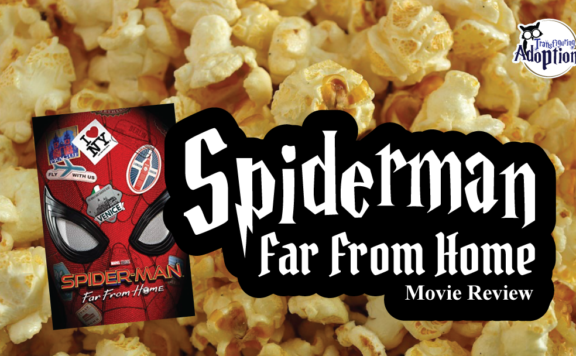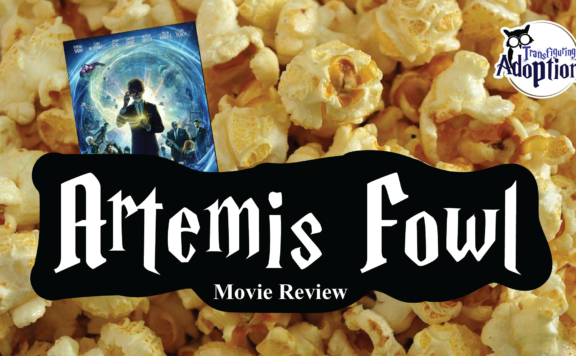Grade:
Transfiguring Adoption awarded this movie 4 Hoots out of 5 based on how useful it will be for a foster/adoptive family. [Learn more about our Hoot grading system here]
Movie Info:
-
Rating: G
-
Genre: Animated
-
Runtime: 88 Minutes
-
Studio: Disney
From the Cover of Tarzan by Disney:
“A man raised by gorillas must decide where he really belongs when he discovers he is a human.”
I have always felt like Tarzan was one of Disney’s underrated classics. Coming out in 1999 it was lumped in as part of Disney’s slump that followed the big hits of the early 90s. However, with it finally being added to the Disney+ platform it’s likely to find a new audience. It tells the age-old story of a boy raised by wild animals (in this case Gorillas) and how things unfold as he is introduced to his own species. As with many Disney movies the soundtrack is fantastic and for me is what really makes the movie. Many of the songs (Two Worlds, You’ll be in My Heart, and Strangers like Me) even have lyrics that relate to themes and struggles found in foster care and adoption!
I was somewhat surprised to see that the movie had a G rating. While there was nothing overly violent or offensive (no mentions of sex, no modern weapons, no foul language, etc.), there are a good amount of moments of peril and the movie is fairy action-packed and fast paced. I normally think of a G rating being applied to movies that are very low-key, and appropriate for very young children. While Tarzan is likely appropriate for all ages of children, I would be mindful of the level of action- especially in the opening sequence (which involves a fire, shipwreck, and leopard attack) and the final act of the movie which includes a lot of fighting between the men and gorillas.
** Spoilers Could Be Ahead **
How Is This Relevant To Adoption & Foster Care?
While on the surface one wouldn’t immediately think of Tarzan as a story that addresses Foster Care or Adoption in a traditional sense, it is absolutely relevant. Tarzan loses his parents as an infant and is taken in by a mother Gorilla, Kala, and raised as her son. Tarzan grows up in the jungle not fully understanding who he is or where he came from and facing challenges with acceptance by his peers and adoptive father figure for being different. These are struggles that almost all children who have experienced foster care or adoption can relate to.
When other humans arrive in the jungle and Tarzan sees them for the first time, he is overwhelmed with curiosity about these people who are like him. This curiosity sometimes leads him to engage in reckless behavior as he strives to learn as much as possible about them, even when it may not be safe. This may be similar to the desire adopted or foster children have to know more about their birth families. While Jane and her father aren’t actually related to Tarzan biologically, they are a link to his past and he is therefore compelled to find out more. In the end we see Tarzan reconcile these two parts of himself and ultimately decide that he belongs with his adoptive family, but he maintains a relationship with Jane and Dr. Porter.
Discussion Points:
- Accepting those who are different
Throughout the movie Kerchak, Tarzan’s adoptive father, struggles to accept Tarzan as part of the family because he is different. When Kala brings him home as a baby Kerchak declares that he’s “not our kind” and frequently says that Tarzan will “never be one of us”. Kala, Tarzan’s adoptive mother, on the other hand repeatedly declares her love for the baby and always treats him as though he is as much her son as any gorilla. When Tarzan struggles with his identity and wishing he looked more like his family Kala reminds him of all the ways in which they are the same and ultimately, they both share a heartbeat and that’s what matters. Tarzan challenges Kerchak’s views at one point asking, “Why are you threatened by anyone different from you?”. Watching these two parental figures and the different ways in which they approach Tarzan can be a great jumping off point for a conversation about acceptance and what that might look like. We do see a redemption arc for Kerchak and at the end of the movie he says to Tarzan, “forgive me for not understanding that you have always been one of us,” and finally calls Tarzan his son. Foster and adoptive kids might be a different race or of a different cultural background than their caregivers which may lead to many of the same feelings and questions that Tarzan has about how he is different from his adoptive mother. It’s important to acknowledge these feelings and also talk about the right and wrong ways to approach those who look or act differently
. - Reconciling two different families/worlds
Tarzan is taken in by Kala and the gorillas from a very young age and grows up with them as his family. As a young adult he is introduced to other humans for the first time and finds that he is compelled to find out more about them and spend time with them. This leads him to questioning his identity and learning about his parents and where he came from. Tarzan struggles to reconcile these two identities- he wants to remain loyal to his adoptive family whom he has grown up with and loves but he also wants to be a part of this human world and learn more about his past. Foster and adoptive kiddos often feel similarly in regard to their adoptive or foster family and their biological families. They can feel torn in two and uncertain how their feelings and interactions with one might affect the other. It’s important to talk about how it’s okay to feel a part of more than one family or world and help them find ways to reconcile these two parts of themselves so they don’t feel so torn in two. Looking at Tarzan’s journey and how he deals with this may help kids be able to better articulate their own feelings and experiences. - Loving those who aren’t physically with you
Towards the end of the movie, Kala shows Tarzan his childhood home and gives him information about his past and family. Kala can see that Tarzan is struggling with the decision to either stay here with his adoptive gorilla family or to go with Jane and her family to be with the other humans. In a touching exchange She tells him, “I just want you to be happy.” He responds with, “No matter where I go, you will always be my mother,” and she replies, “And you’ll be in my heart. Always.” Watching this exchange can be a great way to start a discussion with children about the endurance of love which is an important part of dealing with the various losses associated with foster care and adoption. You can talk about how their biological families love them, even if they aren’t able to parent them right now and how you’ll always love them even if your home isn’t their permanent one. They may one day move into an adoptive home or return to their bio family but that doesn’t mean that you will love them any less or that they’ll stop being a part of your family. For older children and teens this may also be something they struggle with as they prepare to leave the home to go to college or out into the adult world. “You’ll be in my Heart” is a great anthem that goes along with this theme.
Cautionary Points:
- Loss of Parent/Parent Figure
Both of Tarzan’s parents are killed in a leopard attack while he is an infant. We don’t see the actual attack or death, but we do see Kala the Gorilla find their bodies and bloody leopard prints. This may be upsetting for children who have lost a parent or someone else close to them. At the end of the movie we also see Kerchak, Tarzan’s adoptive father and head of the Gorilla troop get shot and dies after finally accepting Tarzan which is a hard scene to watch. - Natural Disasters
The movie opens with a shipwreck and fire. Baby Tarzan and both of his parents escape in a lifeboat but there are tense moments during the escape. If children in your care have experienced a natural disaster involving drowning or fire this may be a difficult scene for them to view.
- Moments of Mild/Moderate Peril
In addition to the shipwreck/leopard attack sequence at the start of the film, there are several other tense chases and fighting sequences. A group of small, but somewhat scarily depicted monkeys chase Jane and Tarzan through the treetops. Tarzan fights a leopard in hand-to-hand combat, and there is a lengthy scene in the film’s climax where Clayton and the other hunters are attacking the gorillas, attempting to put them in cages, threatening them with guns and a somewhat intense chase/fight sequence between Clayton and Tarzan which results in Clayton’s death. Children who have experienced trauma often have a more difficult time regulating their emotions and watching a movie that is fast paced and full of action sequences can trigger their ‘fight-or-flight’ response and lead to their engaging in trauma behaviors. - Mild Bullying
When Tarzan is young, some of the other gorillas tease him and call him names for being different. He is left out and called things like ‘hairless wonder’ and ‘freaky looking’. This doesn’t last very long however, and he quickly makes friends with Terk and Tantor who accept him despite his differences. - Rejection by parent figure
From the moment Kala brings him home, Kerchak, her mate and head of the Gorilla Troop does not accept Tarzan as part of the family. He constantly points out that Tarzan is different and doesn’t belong. He says hurtful things like “I said he could stay but that doesn’t make him my son” and “he will never be one of us”. This is a constant source of harm to Tarzan as he grows up and longs to be accepted. Children who have dealt with rejection by a caregiver may relate to Tarzan’s struggle and therefore this may be upsetting for them to watch.
Discussion Guide:
- When Tarzan and his parents are shipwrecked in the jungle how do they handle it? What would you do if you were in a similar situation?
Caregiver Note: After experiencing the trauma of the shipwreck, it would be understandable for Tarzan’s parents to feel overwhelmed and scared (which they likely do). However, instead of dwelling on those feelings they figure out a plan for how to move forward and build a home and life for themselves in the jungle, showing great resilience. Our children have a similar resilience inside of them that has allowed them to get through their own traumatic past. Coming into care may have felt to them very much like being suddenly stranded in a jungle and this can be a way to get that conversation started about what it feels and looks like to be thrust into a new life situation. - Kala immediately takes Tarzan in and protects him without any hesitation. Why do you think she does this?
Caregiver Note: In the opening sequence we see Kala lose her own infant to a leopard attack. This is somewhat subtle and may not be noticed by young children (it definitely went over my head as a child!) This plays into her reasons for wanting to take in Tarzan but she also sees that he is alone and wouldn’t be able to survive on his own. She very quickly finds herself bonding with him despite him being very different from her and not biologically related. This can be a way for you to talk to the child about how you felt when they first came to live with you and the bond you have with them. - Kerchak, however, allows Tarzan to stay but does not seem to really want him there. Why do you think he feels this way?
Caregiver Note: If children did pick up on the loss of Kerchak and Kala’s baby, this can be a way to talk about the different experiences of grief. Kala channels her grief into loving and caring for Tarzan, but for Kerchak he may see baby Tarzan as a reminder of what he has lost with his own son. It can also be a time to talk about how sometimes people are afraid of what is different and that since Kerchak is in charge of protecting the whole Gorilla troop, he has a responsibility to make sure that they are safe. Kerchak may also have is own previous experience with humans and have seen the destructive things they can do to animals/the jungle (as we later see demonstrated by Clayton) and has let that experience drive his opinion of all humans, much in the same way that previous trauma may affect kiddos (for example- since they were abused by one caregiver they mistrust all caregivers). - How do Terk and the other young gorillas treat Tarzan? How does this make Tarzan feel? Have you ever experienced this? What are ways you can help make others feel welcome instead of left out, even if they’re different from you?
Caregiver Note: While at times Terk seemed friendly to Tarzan, she would leave him out and tease him when the other young gorillas were around. At first Tarzan didn’t seem to notice that he’s being made fun of, but is later hurt and upset about feeling different. This is an opportunity to talk about bullying and the ways in which children can help others to feel welcome and/or how they have felt if they have similar experiences of being made fun of or left out. - When Tarzan is upset and feels like he is different from his friends and other gorillas in his family, his mother reminds him of the ways that they are similar. What are the ways in which you and I are the same or different? Which are more important?
Caregiver Note: This can be a great starting point for a conversation about similarities and differences. Foster and adoptive children may be from a different race or culture than their caregivers which can result in very significant physical differences. However, like Kala does with Tarzan, point out the ways in which you are similar also. And this doesn’t have to be limited to the physical as Kala does (we both have two hands, two eyes, heartbeat). But you can also find interests or personality traits that you have in common. It’s also important to note that our differences make us unique and special and should be celebrated while still finding the common threads that make you part of the same family. - After Tarzan meets Jane and the other humans he is fascinated by them and wants to learn more about these creatures that are like him. However, Kerchak tells him he has to stay away from them. How does Tarzan react to this? Have you ever felt torn between two things that were both important to you?
Caregiver Note: Tarzan struggles to reconcile the two parts of himself- his desire to be loyal to and protect his adoptive Gorilla family and his curiosity and strong desire to know more about his past and the people who are like him. Children may have felt something similar in regards to their birth families. They may love their foster or adoptive family but also feel compelled to seek out their birth family or desire to spend more time with them and this may create feelings of conflict as they may feel like they are betraying one family or the other. As caregivers it’s important to have open conversation to help children avoid feeling like this. If they have contact with their birth families in any capacity make sure they understand that you accept and support these relationships. And if they don’t have contact, try to help them understand the reasons for that (as age/maturity level and guidance from agencies may dictate). - Tarzan confronts Kala about why she didn’t tell him about his identity/past sooner. Why do you think she kept this from him? Do you think that was the right thing to do?
Caregiver Note: It’s not clear from the film why Kala never told Tarzan he was a different species or about how she came to care for him. It can likely be assumed that since she raised him from such a young age and very strongly felt like he was her son that she didn’t want him to feel otherwise or question if he belonged in the family. What to tell a child about their past and when to talk to them about it is one of the trickiest things to navigate with adoption. How your child reacts to this question may give you some insight to how they feel about their own story and how it was told to them or what questions they might still have. - Jane tries to convince Tarzan to return to England with her, saying “You belong with us.” However, Tarzan also feels like he should stay with his adoptive Gorilla family whom he loves. Where do you think Tarzan belongs? What should he do?
Caregiver Note: Again, this can be a great conversation starter with the kids in your care and their opinions about Tarzan’s situation may offer some insight to their own feelings about their foster/adoptive family, their bio family and the different connections they feel to each. The important thing is that there are no right or wrong answers here- Tarzan is part of both worlds and either choice he makes would be a valid one, given the information we have at this point. - Kala shows Tarzan his childhood home and he sees some of his old belongings and a picture of his parents for the first time. How do you think this experience makes Tarzan feel?
Caregiver Note: Children who have been through trauma likely have complicated emotions surrounding items or places from their past. On one hand, seeing pictures of mementos might make them feel a connection to their biological families and provide a sense of familiarity. But, many times these items or locations may also trigger painful memories relating to their trauma. This can be a difficult topic for many, especially if they only recently experienced a trauma. Talking about Tarzan’s experience might be an easier way for them to talk about how these activities might make them feel. - Tarzan protects Jane and Dr. Porter from Kerchak, even going as far as to physically fight him. When the fight ends Tarzan looks at his own hands and seems horrified- as if he didn’t know his own strength or what he was doing at the time and feels bad for hurting Kerchak. Have you ever had an experience like this?
Caregiver Note: Children from a background of trauma will often have various behaviors they engage in when they feel threatened or something triggers a memory or flashback of the trauma. They may get into a fight, break things, or have some other type of emotional outburst. Then once the perceived threat is gone and they have regained emotional regulation they may not remember what they did or why they engaged in certain behaviors. Like Tarzan experiences, this may lead them to feeling bad about hurting someone or causing damage that they didn’t mean to. Some children may also have lingering guilt over defending themselves from an abusive caregiver. It’s important to talk about ways to improve emotional regulation but also that these behaviors stem from an adaptive place that helped them to survive. And while they may have hurt someone, which isn’t ideal, they didn’t mean it in a malicious way, just as Tarzan didn’t intend to hurt Kerchak, he just wanted to help his new friends. - When Tarzan leaves to go back to England with Jane and Dr. Porter, his friends are upset that they didn’t get to say goodbye. Tantor says he is sad, but Terk calls Tarzan names and hits Tantor when he tries to comfort her. Why do you think she reacts this way?
Caregiver Note: Grief can manifest itself in many different ways. Sometimes, it is easier to feel angry than it is to feel sad. Terk isn’t really mad at Tarzan and it doesn’t mean that she doesn’t care about it, this is just Terk’s way of trying to deal with the pain. Tantor says he understands that she is sad too and Terk hits him, likely because she is trying to prove to him that she isn’t sad. Sometimes grief can be perceived as weakness so she may feel that being angry instead makes her seem stronger. This can be a good time to talk to children about the different feelings they have when they experience something sad or upsetting and why sometimes emotions may come out differently than what you’re really feeling (i.e. Engaging in ‘mad’ actions when you’re really sad, laughing when you’re nervous, etc.) - Kerchak is shot by the humans but right before he dies, he finally calls Tarzan his son and apologizes for not understanding that he was a part of the family all along. What changed Kerchak’s mind? How do you think it makes Tarzan feel to hear this?
Caregiver Note: Kerchak has told Tarzan throughout the movie that he will never be one of them and that he doesn’t belong. When he sees Tarzan defending and helping the gorilla family, he realizes he’s been wrong and that looking similar isn’t what makes a family, caring and helping each other is what does that. Kerchak’s change of heart is an important thing to discuss- it shows us that it’s okay to make a mistake sometimes but that it’s important to admit to the mistake and apologize/change behavior. Tarzan has tried his entire life to please Kerchak, so it probably makes him feel good to finally be called his son, something he’s always wanted. But it’s bittersweet because Kerchak is dying and Tarzan won’t get to have a relationship with him now that he’s accepted.
About the Author: Jenn Ehlers
Jenn is a central Virginia native who received her BA in Psychology from the University of Virginia in 2012. Since then she has worked for a local mental health agency and the Department of Social Services in various capacities and has been involved in her community’s efforts to create a Trauma Informed Network. Currently Jenn works in vocational rehab and mentors youth in foster care. When she isn’t working, Jenn enjoys writing stories, anything and everything Harry Potter, and spending time with her niece and nephew.
**Transfiguring Adoption is a nonprofit organization seeking to nurture growth in foster and adoptive families by giving a HOOT about their families. Transfiguring Adoption does not intend for its reviewers nor its review to be professional, medical or legal advice. These reviews and discussion guides are intended to help parents to better be able to connect and understand their children who come from traumatic backgrounds.
